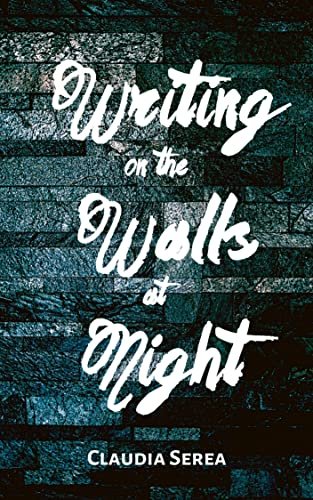Writing on the Walls at Night
Writing on the Wall
s at Night
by Claudia Serea, Unsolicited Press, $20
“We used to tie our rowboats to the lamp posts, and they floated all night next to our windows, waiting for us to jump in. We never did.”
Like people all over the world, I have been in a state of shock, horror, and anger as Russia has waged war in Ukraine for the last few months. I have spent many nights lately baffled by the sheer senselessness of human violence. When I am confused and troubled in this way, I find that is one of the best times to turn to literature, not for easy answers by any means but to read about the people who endured the crises of the past and survived. W.H. Auden has been a source of wisdom and solace. I also found meaning in Writing on the Walls at Night, the latest book by Claudia Serea.
Writing on the Walls at Night is a book of prose poems. Poets from Arthur Rimbaud to Claudia Rankine have used this form to great effect. And while seemingly liberating for the poet who feels constrained by line breaks, it offers its own set of challenges. The major struggle is to keep the poems from becoming too prosaic, to keep the poems poems. Serea does this with skill. In some pieces, she does this with wordplay, “take the sun keys and open the drawer with birdsong. Take the Florida Keys and open the drawer with winter.” In other pieces, she uses repetition, alliteration, and even rhyme to create rhythms in sentences and paragraphs. And throughout the book there is startling imagery, “the grass drinks your voice through thousands of tiny straws.”
Serea uses the narrative possibilities of the prose poem form to further explore her unique imagery. The book contains narratives about a group of children with “jars full of flies in their chests”, “a city of ears” listening to telephone conversations, and a group of postal workers who deliver dreams and nightmares, in addition to many other stories. In fact, these prose poems often read like fairy tales filled with magic, fantasy, and adventure. In one poem, the moon drinks tea while the sun is on the other side of the world, and then the sun does the same. In another, a mouse floats upon the sea in a boat made from half of a walnut shell. Though these pieces lack the tidy moral endings of some fairy tales, they do possess the drama of the human experience.
The book is infused with a blend of surrealism and humor. This is present even in the more difficult poems about growing up under a corrupt and oppressive regime. The surrealism and humor are arguably most effective in these poems, as they point out the absurdity of the state. Under such a government, landmarks are changed rapidly, “after the storm, we woke up in a different city: all the streets and avenues named after famous figures of the past had new names like The Socialism Victory Boulevard, Steel Workers Avenue.” Bureaucracy swells, “the Line Master consulted with the Line Committee and approved the Line List. There was a Line to get in Line which got even longer.” Ideas become outlawed, “did you see the dissident writing in the clouds?” In these pieces the narrator is trying to come to terms with past events, often discovering the ghosts left behind.
In their subject matter these poems feel soberingly relevant, “let’s cover the mass graves with immaculate silence.” But there is a sense of impermanence within the pages of Writing on the Walls at Night, a sense that as bad as things get, this too shall pass. There is also a playful spirit at work in these poems providing more than enough light to counter the darkness. And perhaps that is the great accomplishment of this collection, the smile on her face as the poet fights so many monsters.
Benjamin Schmitt
Benjamin Schmitt is the author of four books, most recently The Saints of Capitalism and Soundtrack to a Fleeting Masculinity. His poems have appeared or are forthcoming in Sojourners, Antioch Review, The Good Men Project, Hobart, Columbia Review, Spillway, and elsewhere. A co-founder of Pacifica Writers’ Workshop, he has also written articles for The Seattle Times and At The Inkwell. He lives in Seattle with his wife and children.


